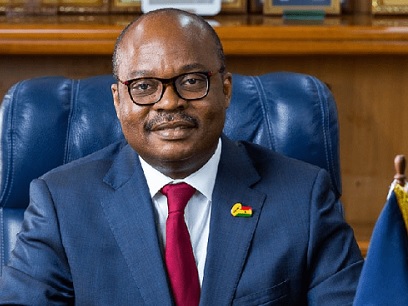The Monetary Policy Committee (MPC) of the Bank of Ghana (BoG) has maintained the policy rate at 29.5 percent.
Dr Ernest Addison, Governor of the Central Bank, said price developments since the last MPC meeting in March 2023, pointed to a continued easing of inflationary pressures, with two additional consecutive declines in headline inflation.
The Governor was speaking at a press briefing after the 112th MPC meeting held from Wednesday, May 17, 2023, to Friday, May 19, 2023.
The Committee deliberated on a variety of macroeconomic issues, including the impact of the Domestic Debt Exchange on the economy, recent macroeconomic developments, and risks to inflation and growth outlook.
He said there had been a further deceleration in headline inflation to 45.0 per cent in March 2023 and then to 41.2 per cent in April 2023.
The ease in inflation had been largely supported by monetary policy tightening, relatively stable exchange rate, and declining international crude oil prices, which have allowed ex-pump petroleum prices to be adjusted downwards.
The Governor said from the beginning of the year to April 2023, headline inflation had recorded a decline of 12.9 per cent, non-food inflation had declined by 14.5 per cent, and food inflation also fell by 11.1 per cent.
“Underlying inflationary pressures are also easing, as the Bank’s core measure of inflation declined for the fourth consecutive month,” he added.
He said the core inflation, which excluded energy and utility prices, declined to 41.7 per cent in April 2023, from 44.6 per cent in March, and 52.0 per cent in February 2023.
Dr Addison said the private sector credit generally slowed in line with the tight monetary policy stance, banks’ portfolio rebalancing after the domestic debt exchange and moderation in economic activity.
He said the nominal growth in private sector credit eased to 19.8 per cent in April 2023, relative to 26.5 per cent growth recorded in April 2022.
“In real terms, private sector credit contracted by 15.2 per cent compared with the 2.4 per cent growth recorded over the same comparative period,” he added.
He said the 2022 audited financial statements of banks also pointed to some impairments in capital levels, although most banks posted Capital Adequacy Ratios above the 10 per cent regulatory minimum at end-December 2022.
He said this was attributed to the effect of the roll-out of the temporary regulatory reliefs extended to the banks to cushion them against the impact of the Domestic Debt Exchange Programme (DDEP) as was done at the onset of the pandemic.
He said Banks continued to rebalance their portfolios in response to the impact of the DDEP on their balance sheet shifting away from medium-to-long term investments to short-term investments and increases in new loans.
In general, the banks returned to making profits in the first four months of 2023, broadly reflecting higher operating income.
He said from January to April 2023 total export earnings declined by 3.6 per cent year-on-year to $5.6 billion, on the back of lower crude oil exports and to a lesser extent non-traditional exports, as gold and cocoa exports increased.
Dr Addison said crude oil exports fell by 36.7 per cent to $1.2 billion, mainly on account of both lower price and production volume effects as the
TEN fields declined from a production of 30,000 barrels per day to 24,000 barrels per day.
However, gold exports increased by 15.9 per cent to $2.2 billion driven by higher export volumes, and cocoa beans export also rose by 30.3 per cent to $950.8 million, largely on the back of increased production volumes.
He said the total import bill over the review period was provisionally estimated at $4.0 billion, down by 13.9 per cent year-on-year and driven largely by non-oil imports and to a lesser extent by oil and gas imports.
Dr Addison said the gross international reserves at the end of March 2023 stood at $5.1 billion, equivalent to 2.4 months of import cover, compared with the end-December 2022 stock position of $6.2 billion, equivalent to 2.7 months of import cover.
The reserves, excluding oil funds, encumbered and pledged assets, stood at $1.4 billion, while the net International Reserves as of March 2023 stood at $2.1 billion.
He said with the approval of the IMF-supported programme and receipt of the first tranche of the disbursement, the reserves have increased to $5.7 billion as of Friday, May 19, 2023, equivalent to 2.6 months of import cover.
Source: GNA





